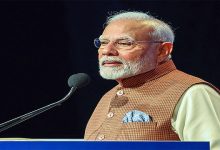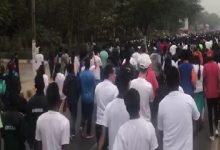
ISRO Chief Dr S Somanath on Saturday said that the first test flight for the ‘TV-D1’ (Test Vehicle Development Flight 1), part of the Indian astronaut project Gaganyaan will take place on October 21.
He said that D1 would be followed up with at least three more tests of the same nature. The test vehicle development flight (TV-D1) will be conducted at the Satish Dhawan Space Centre in Sriharikota in Andhra Pradesh to test the crew module that is scheduled to house Indian astronauts during human spaceflight late next year.
“Test Vehicle-D1 mission is scheduled for October 21. This is the Gaganyaan program. The Gaganyaan program requires testing, demonstrating the crew escape system. The crew escape system is a very critical system in Gaganyaan,” Somanath told reporters in Madurai.
TV-D1 involves launching the crew module to outer space, bringing it back to earth and recovering it after touchdown in the Bay of Bengal. “So this test is to demonstrate that crew escape system in one condition of the flight. So this condition we are demonstrating is called the Transonic condition… Every month we will have at least one launch. After this test vehicle launch, we have GSLV. Then we have SSLV. Then after that, the Gaganyaan unmanned mission will be there. In between there will be a PSLV launch. So before January, you will see at least 4-5 launches,” Somanath said.
Gaganyaan project envisages a demonstration of human spaceflight capability by launching a crew of 3 members to an orbit of 400 km for a 3-day mission and bringing them back safely to earth, by landing in Indian sea waters.
This program will make India the fourth nation to launch a manned spaceflight mission after the US, Russia, and China. The Gaganyaan mission entails the safe transportation of astronauts to space and back.
A crucial component of this mission is the deployment of drogue parachutes, which play a pivotal role in stabilizing the crew module and reducing its velocity to a safe level during re-entry. To a query about the Aditya-L1 programme, the maiden solar mission undertaken by ISRO, Somanath said that Aditya-L1’s mission is “working very well” and expressed hope that the spacecraft will reach the Lagrange point (L1) in the middle of January 2024
“Currently, it takes almost 110 days to travel from Earth to the L1 point. So by the middle of January, it will reach the L1 point. Then at that point, we will do the insertion into the Lagrange point. That is called the halo orbit. It’s a big orbit. So that will happen by the middle of January,” Somanath said.
Aditya-L1 is the first space-based observatory class Indian solar mission to study the Sun from a substantial distance of 1.5 million kilometres. It will take approximately 125 days to reach the L1 point.















